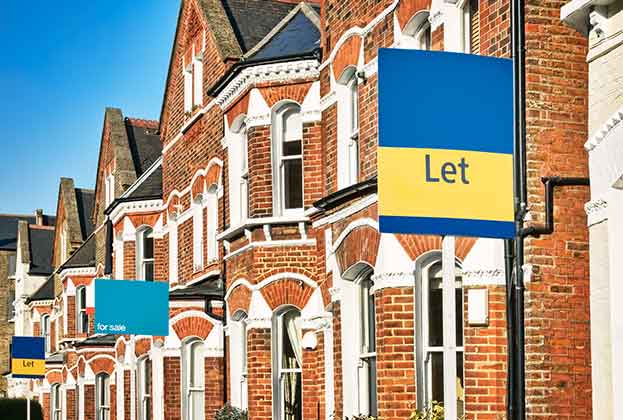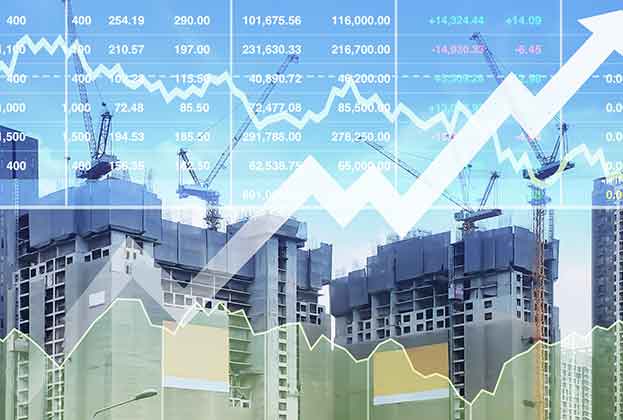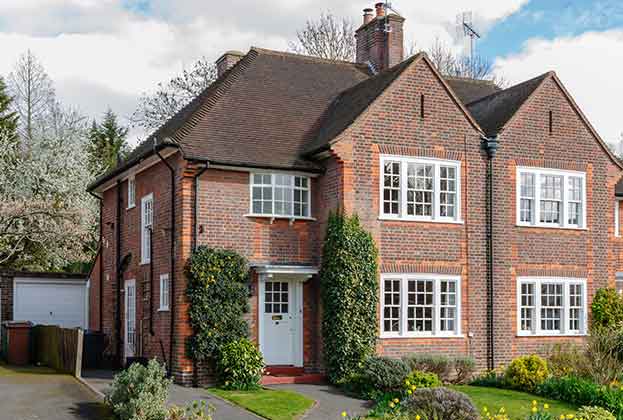Central London’s recovery interrupted as global economic growth slows
Demand and activity levels have remained exceptionally strong across the prime central London markets so far in 2022. Sales of £5m+ properties have reached their highest number for the first nine months of any year since records began in 2006.
But given wider economic and geopolitical uncertainty, this is yet to translate into sustained price growth. Values remain 18% below their previous 2014 peak; they are more than -40% lower in US$ terms.
Despite this, there are still some factors that will limit price growth across the prime central London market going forward and this will likely interrupt its long-awaited recovery.
Over the next year, the UK is expected to teeter on the edge of a recession. As interest rates continue to rise, weak sentiment from the wider prime markets across the UK could feed into central London.
World GDP growth is also forecast to slow in 2023 and the US and Eurozone are expected to suffer from similar pressures as the UK. But this is much less of a concern in other emerging economies such as in the Middle East, India and, to some extent, China.
As such, we are forecasting values to fall by a marginal -2.0% by the end of next year. This is much less significant that the wider London and indeed UK housing markets, as there is less reliance on mortgage debt in central London and there remains value on offer across this rarefied market.
Domestic political instability is also likely to temper growth in 2024 with the likelihood of a general election and the possibility of tax changes for both domestic and non-domiciled individuals. But economic forecasts also predict much lower inflation and a return to stronger GDP growth. We are therefore forecasting modest growth of 2.0% by the end of 2024, not that dissimilar to the levels of growth we have seen throughout the unsettled year of 2022.
Longer term, growth will be underpinned by the value on offer, a lack of supply compounded by fewer new build alternatives, and falling levels of inflation and interest rates. But stronger growth is likely to be held back by potential tax changes under a new Government. By the end of 2027 we expect average prime central London values to increase by 13.5%.
Across outer prime London, stretching from the likes of Richmond and Wimbledon in the South West, Hampstead in the North, and Canary Wharf in the East, the rising cost of debt is likely to have a much more profound effect.
Although the top end of the market is less reliant on borrowing than the mainstream, it is not completely immune to interest rate changes. Wider economic and cost of living pressures will impact on buyers’ budgets. As such, we expect prime prices to fall by an average of -7.0% by the end of 2023, unwinding some of the growth seen since the beginning of the pandemic and bringing values back to where they were in early 2021.
There is no doubt that new entrants to the mortgage market and existing borrowers coming to the end of a fixed term mortgage over the next 18 months or so will face a sharp rise in costs. But, for the latter, the extensive use of longer term fixes recently means that many will avoid the most significant rises in the cost of their debt.
Some may still need to temporarily dip into their savings or cut back on discretionary spending to cover these increases. However, the prime markets are driven by greater levels of wealth and so these homeowners’ finances are likely better able to withstand this than those in the wider mainstream markets.
Looking further ahead, we expect 2024 to be a year of two halves as Bank base rate is forecast to gradually come down from mid-2024 onwards, once inflation is under control.
Over the medium term, once the economy picks up and we see a more significant improvement in mortgage costs, demand from affluent buyers looking to upsize and relocate within the capital will pick up again and so we predict a more pronounced rebound for 2026. In total over the five year period to 2027, we expect values across outer prime London to rise by an average of 6.1%.
After more than two years of unprecedented growth, in recent months we have begun to see more caution among buyers in the prime regional markets.
Despite a continued imbalance between supply and demand for certain properties such as larger family homes with outside space, buyers’ spending power has come under pressure from higher interest rates, disruption in the mortgage markets and the rising cost of living.
While higher levels of disposable income means buyers are more insulated against these economic pressures, a change in sentiment in the wider mainstream housing market has the potential to feed up into higher price bands. We are forecasting values to fall by an average of -6.5% by the end of 2023, which would take prices back to where they were in mid-2021.
These pressures are also likely to have a more significant impact on markets which typically take on more debt. For example, buyers in the prime markets of London’s suburbs and its commuter zone tend to be younger and earlier on in their journey up the housing ladder and so they have less equity behind them and a greater requirement for mortgage debt. As such, these markets will see more significant price falls next year, particularly as they have been some of the strongest performing since the start of the pandemic.
The Wider South, which includes the coastal hotspots of Cornwall, Devon and Norfolk, tends to see more cash buyers and so whilst they won’t be completely immune to these factors, are likely to be more resilient.
Similarly, the lower value markets of the Midlands, North and Scotland will see values fall by an average of -5.0% by the end of next year. The value gap between these locations and those in the South means there’s more capacity for growth in the former and so we expect them to be the strongest performing regions over the five years to 2027.
.jpg)



